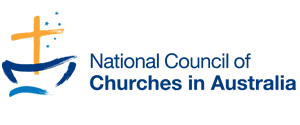Genesis 1:26 and 27.
Then God said,
‘Let us make humankind in our image, according to our likeness….
So God created humankind in his image,
in the image of God he created them;
male and female he created them.
The global ecumenical movement came into being with the joining together of three other ‘movements’. One was the Life and Work Movement which had its focus on the practical activities of the churches. A second was the Faith and Order Movement with a focus growing the understanding and respect of the churches for each other. Later the International Missionary Council joined and an emphasis on ‘witness’ was added.
These three aspects continue to be core to ecumenical life and can be summarised in these question:
- What can we do together?
- How can we grow together?
- What can we say together?
Recently I observed the way that these questions were answered in action.
 I was in the Apartheid Museum in Johannesburg. There was a special exhibition focused on Archbishop Desmond Tutu and the work of the churches in advocacy for the ending of apartheid. There was much to read and ponder.
I was in the Apartheid Museum in Johannesburg. There was a special exhibition focused on Archbishop Desmond Tutu and the work of the churches in advocacy for the ending of apartheid. There was much to read and ponder.
I was deeply moved by, and appreciate, the many references to the work of the Ecumenical Movement in its prophetic and intentional calls for an end of apartheid. I thought about the leaders in that season who stood out prophetically and were condemned for the stand they took. In the museum they were being honoured.
Within the exhibition there were references to the Biblical witness that affirms that the whole of humanity is created in the image of God and the challenging of the theology created to justify ‘the separation of races’.
Appreciation was expressed to the global church for ‘not forgetting’ the situation faced by people discriminated against, and imprisoned in South Africa at that time. There were picture of protests in the UK, USA, South Africa and other places. It was obvious that clergy were in the front lines of protest.
I was left wondering about today. Who is it we must not forget? Where are people still subject to control and systematic marginalisation? What is the voice of the church in these places? How can we use our questions to guide us and so bring about lasting and real change?
Taking a stand is risky. People will not agree with us. It may seem that there is little likelihood of change.
In the museum the tape of the speech made by F. W. de Klerk announcing the end of apartheid was played. Hearing these words in the context of the museum and its narrative of cruelty and suffering was very moving. They were words that many thought could never be uttered. I was reminded that deep change can happen and it is possible.
Rev John Gilmore
NCCA President









